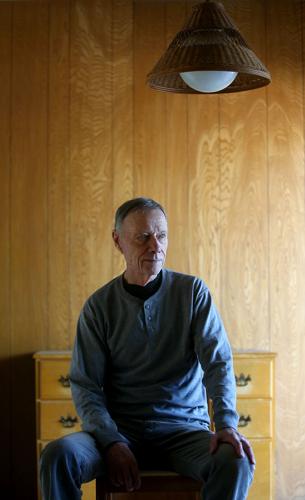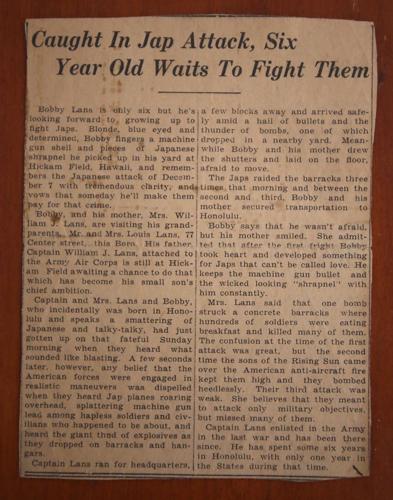Always an early riser, 5-year-old Bob Lans woke up on the morning of Dec. 7, 1941 and headed to the second-floor bathroom.
He often stood on top of the toilet lid and cranked open the window, hoping for a glimpse of ships as they pulled into Pearl Harbor. But that morning he was met with a different sight: Japanese warplanes coming in from the ocean.
To his left, he heard a “humongous explosion” from a fuel tank the bombers hit on their way to attack the U.S. Navy ships moored in the harbor.
“The next thing, the planes were coming through,” he said. “And they were coming through lower than my window was.”
The house was perched on a hill near the harbor and the planes were flying low to better target their torpedoes, Lans, now 80, said Tuesday from his kitchen on Tucson’s east side.
“I could see the pilots in their cockpits, they were that close to where I was,” Lans recalled.
As the bombs began to fall, his father, who was a captain in the Army, hustled him and his mother downstairs and put them under the dining room table.
“That’s where I spent most of the attack,” he said.
A bomb fell on the nearby parade grounds of Hickam Field as his father opened the door to rush to the Army headquarters building. Lans described the powerful explosion as “like a Fourth of July thing, this huge colored mass from the bomb drop” that is seared into his memory.
The surprise attack on Pearl Harbor killed more than 2,400 Americans, including 1,177 aboard the USS Arizona. On Dec. 8, President Franklin Roosevelt said the day of the attack “will live in infamy” and Congress declared war on Japan.
Back in Pearl Harbor, civilians didn’t know what was coming next.
“Everybody thought there was going to be an invasion,” Lans said.
He and his family moved into the hills and lived with a Hawaiian family for a time. They moved back to their house when the invasion never materialized.
Although only one house in the neighborhood had been hit by a bomb, Lans remembers dodging the shell casings that littered the sidewalk while he rode his tricycle.
Not long after, he was aboard a cargo ship headed for San Francisco with his mother. The tense ride — always in fear of Japanese submarines lurking below the water’s surface — was broken up by daily drills involving a machine gun mounted on the ship’s deck.
Within days of arriving in San Francisco, he was on a train to New Jersey to live with relatives. His family lived in Palo Alto, California, for several years before moving to Tucson in 1951 to help with his father’s arthritis.
Lans has been a Tucsonan since then, except for two years in the early 1960s when he was drafted into the Army and was stationed at bases throughout the United States. He went to Tucson High and the University of Arizona before teaching and coaching gymnastics at Palo Verde High School until 1991.
The trauma of the attack on Pearl Harbor stayed with him, he said, recalling a day from his boyhood when a plane was flying low over his aunt’s house near Chesapeake Bay and he instinctively scurried under the porch.
“Anybody that is in war is traumatized,” he said, whether you are a soldier or a child bystander. “I can’t even imagine what’s happening with these kids in Syria.”





